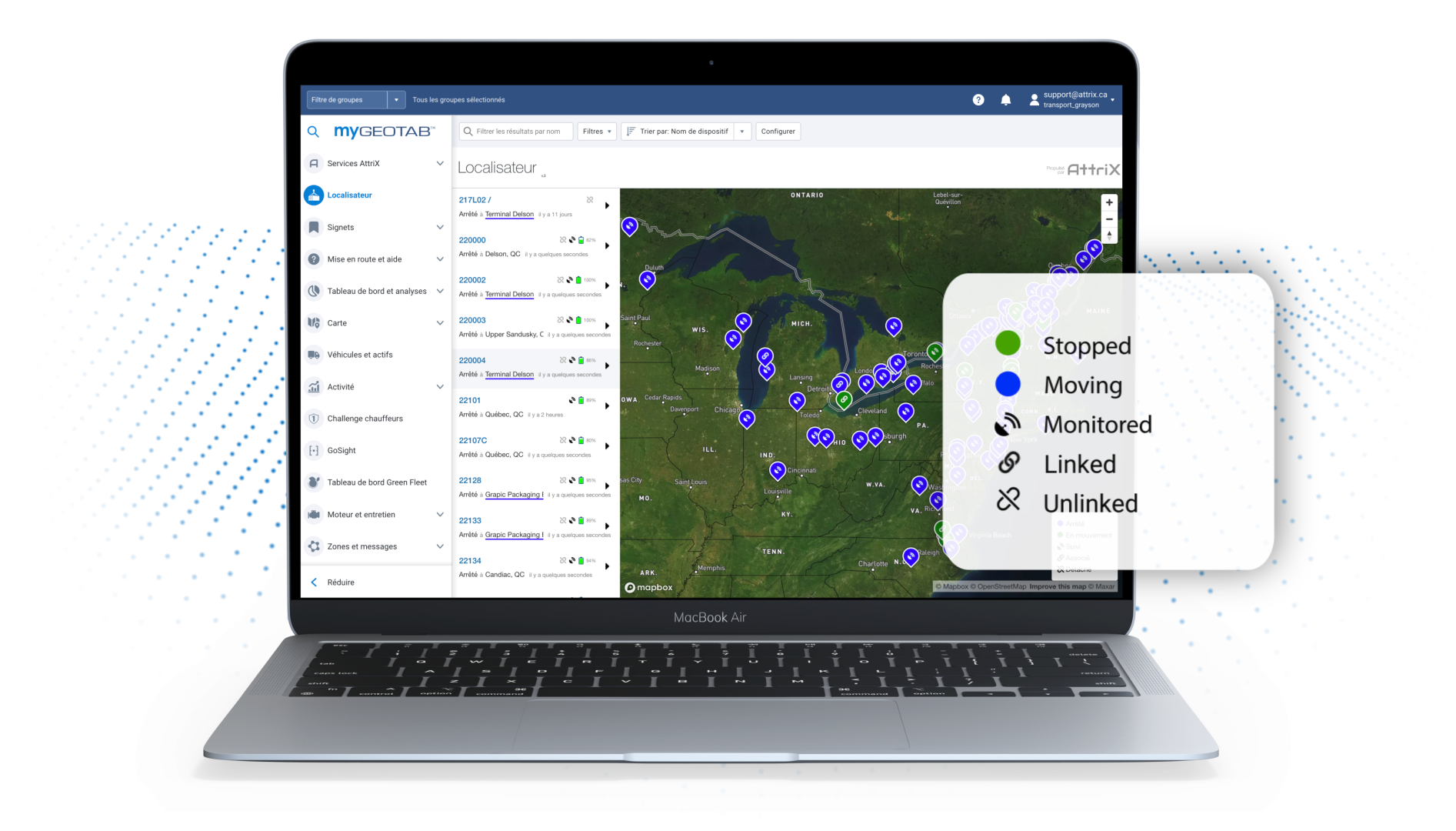Commercial Fleet Management: Strategies, Tools & Tips
Commercial fleet management plays a vital role in keeping businesses running smoothly, especially in industries like transportation, logistics, and...
Keep an eye on the road
Simplify your driver's routine
For efficient decision making
Ensure the compliance of your fleet
Simplify the daily life of your drivers
Maximize the value of your data
Unparalleled monitoring of your assets
The friendly competition that pays off
Planning powered by data
Exceed your customers' expectations
Provide better service to your users
Maximize the satisfaction of your citizens
Simplify your daily life on the construction site
Facilitate the electrification of your fleet
Our experts meet your needs
Easily meet the standards
Improve the safety of your drivers
Protect your data and your fleet
2 min read
AttriX
Dec 20, 2023 9:47:11 AM

In the construction industry, advanced equipment tracking is no longer a luxury but a necessity. This article delves deep into the various benefits of modern tracking systems and their indispensable applications in safeguarding valuable construction assets.
In the construction industry, equipment security is an absolute must. Any incidence of theft or misuse can have massive financial implications and lead to delays in project timelines. Fortunately, advanced tracking systems offer a robust solution by providing real-time location updates and usage monitoring. It is imperative to have these systems in place to prevent theft and ensure that equipment is being utilized appropriately.
Moreover, these systems enable efficient equipment management across multiple job sites, providing valuable insights into usage patterns. This helps to identify underutilized resources and optimize the use of expensive machinery, ensuring maximum operational efficiency. The level of oversight these systems provide is critical to avoiding unnecessary costs and delays in project completion.
Real-time tracking is an indispensable feature that provides instant updates on the location and status of equipment. It is a game-changer for project managers as it allows them to make prompt adjustments in resource allocation, ensuring that the right equipment is available at the right time. This, in turn, significantly enhances project efficiency.
Furthermore, real-time tracking is an excellent tool for quickly recovering stolen or misplaced assets. The ability to pinpoint the exact location of equipment reduces the risk of loss, guaranteeing that projects remain on schedule and within budget.
IoT technology is the game-changer in fleet management. Tracking systems equipped with sensors can effectively track various metrics, such as fuel consumption and maintenance needs. This data is crucial for planning preventive maintenance, reducing equipment downtime, and significantly extending the lifespan of fleet vehicles.
On the other hand, IoT allows fuel usage and engine performance monitoring so companies can optimize their carbon footprint and efficiently manage operational costs. So, if you want to stay ahead in the game, it's high time you embrace IoT technology as a part of your fleet management strategy.
Geofencing is a potent tool that offers an additional layer of security and management for large-scale projects. With the ability to set virtual perimeters, geofencing ensures that equipment is used within designated areas, reducing the likelihood of theft and misuse.
Geofencing is not just limited to security but is also critical in enhancing project management. By setting up alerts for when equipment enters or leaves a site, geofencing provides valuable data for time tracking and billing. This data accuracy is crucial for ensuring clients are billed correctly and for internal cost management.
Advanced tracking systems are powerful tools that use data analytics to transform raw data into actionable insights essential for making informed decisions about fleet management. These insights enable businesses to optimize usage, schedule maintenance, and continuously improve by analyzing trends and performance metrics.
These systems offer robust reporting capabilities critical for strategic planning. By reviewing historical data, companies can identify patterns and make informed predictions about future equipment needs, enabling more effective resource planning and budgeting. In short, advanced tracking systems are indispensable for any business that wants to stay ahead of the competition and achieve long-term success.
Safety and compliance are essential in the construction industry. Advanced tracking systems are necessary to ensure equipment is used safely and fully compliant with industry regulations. Real-time monitoring and alerts are critical to providing a safer working environment by preventing misuse and ensuring strict adherence to safety standards.
Advanced tracking systems are indispensable for regulatory compliance. The detailed logs and reports generated by tracking systems are critical documentation for audits and inspections. They ensure that companies meet all legal requirements and maintain their reputation as reliable and responsible players in the industry.
It is imperative to understand that advanced construction equipment tracking systems are not merely a technological upgrade but a strategic investment. These systems provide many benefits, including heightened security, increased efficiency, improved compliance, and enhanced sustainability. Consequently, as the construction industry evolves, these systems will become increasingly indispensable in maintaining a competitive edge.

Commercial fleet management plays a vital role in keeping businesses running smoothly, especially in industries like transportation, logistics, and...

In fleet management, fleet compliance services play a much bigger role than just checking a box. They’re about keeping your drivers safe, your...

Trucking has always come with its fair share of challenges, from road safety and liability issues to managing fleet efficiency. As the industry...